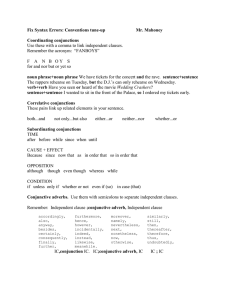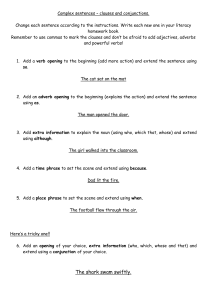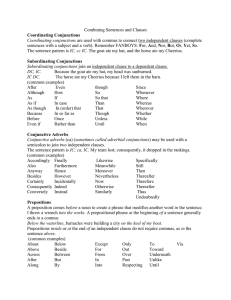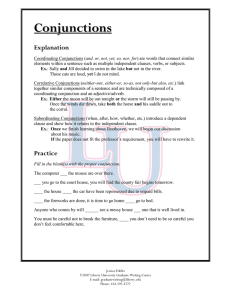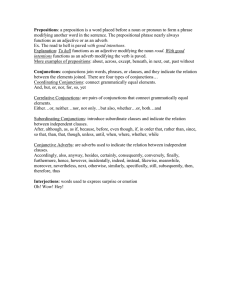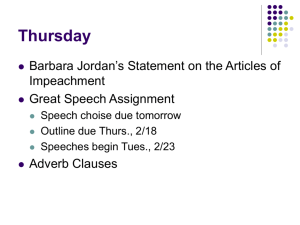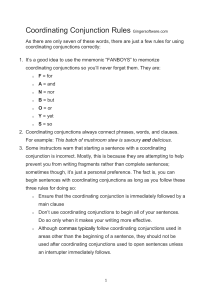Conjunctions
advertisement
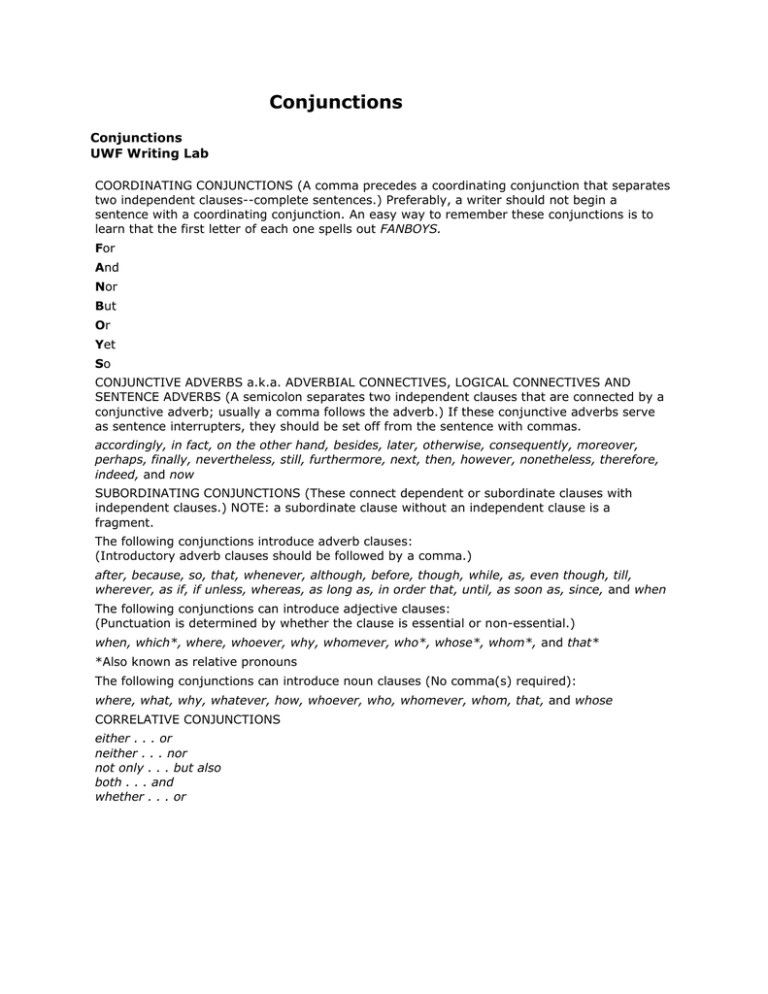
Conjunctions Conjunctions UWF Writing Lab COORDINATING CONJUNCTIONS (A comma precedes a coordinating conjunction that separates two independent clauses--complete sentences.) Preferably, a writer should not begin a sentence with a coordinating conjunction. An easy way to remember these conjunctions is to learn that the first letter of each one spells out FANBOYS. For And Nor But Or Yet So CONJUNCTIVE ADVERBS a.k.a. ADVERBIAL CONNECTIVES, LOGICAL CONNECTIVES AND SENTENCE ADVERBS (A semicolon separates two independent clauses that are connected by a conjunctive adverb; usually a comma follows the adverb.) If these conjunctive adverbs serve as sentence interrupters, they should be set off from the sentence with commas. accordingly, in fact, on the other hand, besides, later, otherwise, consequently, moreover, perhaps, finally, nevertheless, still, furthermore, next, then, however, nonetheless, therefore, indeed, and now SUBORDINATING CONJUNCTIONS (These connect dependent or subordinate clauses with independent clauses.) NOTE: a subordinate clause without an independent clause is a fragment. The following conjunctions introduce adverb clauses: (Introductory adverb clauses should be followed by a comma.) after, because, so, that, whenever, although, before, though, while, as, even though, till, wherever, as if, if unless, whereas, as long as, in order that, until, as soon as, since, and when The following conjunctions can introduce adjective clauses: (Punctuation is determined by whether the clause is essential or non-essential.) when, which*, where, whoever, why, whomever, who*, whose*, whom*, and that* *Also known as relative pronouns The following conjunctions can introduce noun clauses (No comma(s) required): where, what, why, whatever, how, whoever, who, whomever, whom, that, and whose CORRELATIVE CONJUNCTIONS either . . . or neither . . . nor not only . . . but also both . . . and whether . . . or
